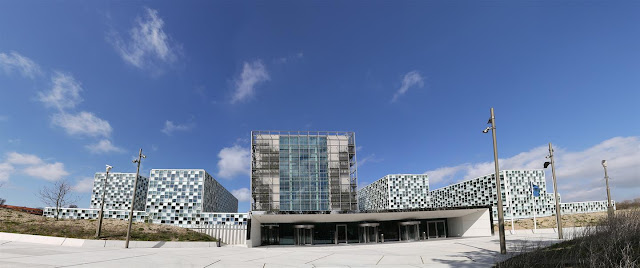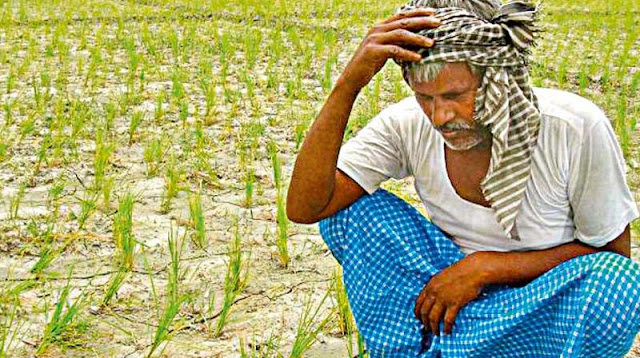The International Criminal Court (ICC)
 The International Criminal Court (ICC) investigates and, where warranted, tries individuals charged with the gravest crimes of concern to the international community:
The International Criminal Court (ICC) investigates and, where warranted, tries individuals charged with the gravest crimes of concern to the international community: - Genocide
- War crimes
- Crimes against humanity.
The Court is participating in a global fight to end impunity, and through international criminal justice, the Court aims to hold those responsible accountable for their crimes and to help prevent these crimes from happening again.
It seeks to complement, not replace, national Courts. Governed by an international treaty called the Rome Statute, the ICC is the world’s first permanent international criminal court.
Key features
1. Trials are fair: ICC judges conduct judicial proceedings and ensure the fairness of proceedings.
2. The Prosecution is independent: The Office of the Prosecutor is an independent organ of the Court. The Prosecutor conducts preliminary examinations, investigations and is the only one who can bring cases before the Court.
3. Defendants' rights are upheld: Defendants are entitled to public, fair proceedings that they can follow in a language they fully understand. Defendants are presumed innocent until proven guilty after a trial. The Rome Statute grabts the defendant the right:
- To be informed of the charges,
- To have time and facilities to prepare their defence and
- To be tried without undue delay,
- To freely choose a lawyer,
- To examine witnesses and present evidence,
- Not to be compelled to testify or to confess guilt,
- To remain silent,
- To receive from the Prosecutor evidence which he or she believes shows or tends to show the innocence of the accused, or to mitigate the guilt of the accused,
- To be able to follow the proceedings in a language he or she fully understands, and therefore to have an interpreter and translations as required.
 |
| The International Criminal Court (ICC) |
Facts and Figures:
Today the Court has:
- Over 800 staff members: From approximately 100 States.
- 6 official languages: English, French, Arabic, Chinese, Russian and Spanish.
- 6 field offices: Kinshasa and Bunia (Democratic Republic of the Congo, "DRC"); Kampala (Uganda); Bangui (Central African Republic, "CAR"); Nairobi (Kenya), Abidjan (Côte d'Ivoire).
- 2 working languages: English and French.
- Headquarters: The Hague, the Netherlands.
- 2016 budget: €139.5 million.
Founding treaty: The Rome Statute
The creation of the Rome Statute in 1998 was in itself a historic event, marking a milestone in humankind's efforts towards a more just world.
The Rome Statute then took effect in 2002, upon ratification by 60 States. In addition to founding the Court and defining the crimes of genocide, war crimes, crimes against humanity, and – as of amendments made in 2010 – the crime of aggression (for these amendments to enter into force, they must be ratified by at least 30 States and then voted upon by States Parties in 2017), the Rome Statute also sets new standards for victims' representation in the Courtroom, and ensures fair trials and the rights of the defence. The Court seeks global cooperation to protect all people from the crimes codified in the Rome Statute.
Today the treaty serves as the ICC's guiding legal instrument, which is elaborated in such other legal texts as the Elements of Crimes, Rules of Procedure and Evidence and more.
The crimes
The Court's founding treaty, called the Rome Statute, grants the ICC jurisdiction over four main crimes.
- Genocide: the crime of genocide is characterised by the specific intent to destroy in whole or in part a national, ethnic, racial or religious group by killing its members or by other means: causing serious bodily or mental harm to members of the group; deliberately inflicting on the group conditions of life calculated to bring about its physical destruction in whole or in part; imposing measures intended to prevent births within the group; or forcibly transferring children of the group to another group.
- Crimes against humanity, which are serious violations committed as part of a large-scale attack against any civilian population. The 15 forms of crimes against humanity listed in the Rome Statute include offences such as murder, rape, imprisonment, enforced disappearances, enslavement – particularly of women and children, sexual slavery, torture, apartheid and deportation.
- War crimes which are grave breaches of the Geneva conventions in the context of armed conflict and include, for instance, the use of child soldiers; the killing or torture of persons such as civilians or prisoners of war; intentionally directing attacks against hospitals, historic monuments, or buildings dedicated to religion, education, art, science or charitable purposes.
- Crime of aggression: It is the use of armed force by a State against the sovereignty, integrity or independence of another State. The definition of this crime was adopted through amending the Rome Statute at the first Review Conference of the Statute in Kampala, Uganda, in 2010. For these amendments to enter into force, they must be ratified by at least 30 States and then voted upon by States Parties in 2017.
Ten key facts about the legal process
Further to the Key Features listed above, here are some of the basics you may want to know:
- The ICC does not prosecute those under the age of 18 when a crime was committed.
- Before the Prosecutor can investigate, she must conduct a preliminary examination considering such matters as sufficient evidence, jurisdiction, gravity, complementarity, and the interests of justice.
- When investigating, the Prosecutor must collect and disclose both incriminating and exonerating evidence.
- The defendant is considered innocent until proven guilty. The burden of proof lies with the Prosecutor.
- During all stages of proceedings (Pre-Trial, Trial and Appeals), the defendant has the right to information in a language he or she fully understands, thus the ICC proceedings are conducted in multiple languages, with teams of interpreters and translators at work.
- Pre-Trial judges issue warrants of arrest and ensure there is enough evidence before a case can go to trial.
- Before a case is committed to trial (during the Pre-Trial phase), the defendant is referred to as a suspect. Once the case is committed to trial, since at that point the charges have been confirmed, the defendant is referred to as the accused.
- Trial judges hear the evidence from the Prosecutor, Defence, and the Victims’ lawyers, render a verdict, and if a person is found guilty, the sentence and decision on reparations.
- Appeals judges render decisions on appeals from the Prosecutor or Defence.
- If a case is closed without a verdict of guilt, it can be reopened if the Prosecutor presents new evidence.













































